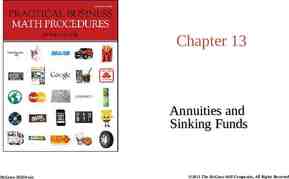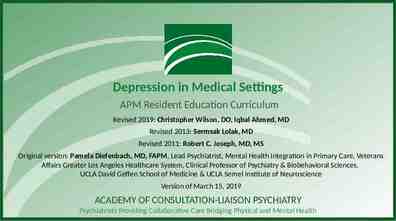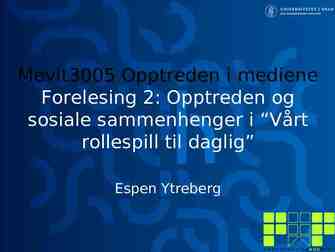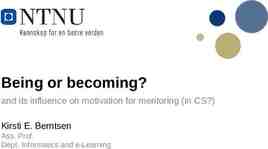Myers’ PSYCHOLOGY (7th Ed) Chapter 14 Stress and Health James A.
36 Slides1.42 MB

Myers’ PSYCHOLOGY (7th Ed) Chapter 14 Stress and Health James A. McCubbin, PhD Clemson University Worth Publishers

Susceptibility to Stress 1 Almost Always 1. 2. 3. 4. 5. 6. 7. 8. 9. 10. 11. 12. 13. 14. 15. 16. 17. 18. 19. 20. 21. 3 about ½ the time 5 Never I eat at least one hot, balanced meal a day. I get 7-8 hours sleep at least 4 nights a week. I give and receive affection regularly. I have at least one relative within 50 miles on whom I can rely. I exercise to the point of perspiration at least twice a week. I avoid tobacco use. I consume fewer than 5 alcoholic drinks per week. I am appropriate weight for my height. I have an income adequate to meet the basic expenses . I get strength from my religious beliefs. I regularly attend club or social activities. I have a network of friends and acquaintances. I have one or more friends to confide in about personal matters. I am in good health. I am able to speak openly about my feelings when angry or worried. I regularly have conversations with the people I live with about domestic problems. I do something for fun at least once a week. I am able to organize my time effectively. I drink fewer than three cups of coffee, cola or tea per day. I take quiet time for myself during the day. I have an optimistic outlook on life.

SUSCEPTIBILITY TO STRESS KEY 32 SUSCEPTIBLE TO STRESS 52-77 SERIOUS STS! 78 U-R A MIRACLE!

Stress and Health Behavioral Medicine interdisciplinary field that integrates behavioral and medical knowledge and applies that knowledge to health and disease Health Psychology subfield of psychology that provides psychology’s contribution to behavioral medicine

Stress and Illness Leading causes of death in the US in 1900 and 2000

Stress and Illness Stress the process by which we perceive and respond to certain events, called stressors, that we appraise as threatening or challenging

Stress Appraisal Appraisal Response Threat (“Yikes! This is beyond me!”) Panic, freeze up Challenge (“I’ve got to apply all I know”) Aroused, focused Stressful event (tough math test)

Cerebral cortex (perceives stressor) Thalamus Hypothalamus Pituitary hormone in the bloodstream stimulates the outer part of the adrenal gland to release the stress hormone cortisol Pituitary gland Sympathetic nervous system releases the stress hormones epinephrine and norepinephrine from nerve endings in the inner part of the adrenal glands Adrenal glands

Stress and Illness The body’s resistance to stress can last only so long before exhaustion sets in Stress resistance Stressor occurs Phase 1 Alarm reaction (mobilize resources) Phase 2 Resistance (cope with stressor) Phase 3 Exhaustion (reserves depleted) General Adaptation Syndrome Selye’s concept of the body’s adaptive response to stress in three stages

Stressful Life Events Catastrophic Events earthquakes, combat stress, floods Life Changes death of a loved one, divorce, loss of job, promotion Daily Hassles rush hour traffic, long lines, job stress, burnout

Stressful Life Events Chronic Stress by Age

Perceived Control Health consequences of a loss of control “Executive” rat To shock control “Subordinate” rat To shock source Control rat No connection to shock source

Stress and the Heart Coronary Heart Disease clogging of the vessels that nourish the heart muscle leading cause of death in many developed countries

Stress and the Heart Hopelessness scores 3.5 3 Men who feel extreme hopelessness are at greater risk for heart attacks and early death 2.5 2 1.5 1 0.5 0 Heart attack Low risk Death Moderate risk High risk

Type A/Type B Personality 1. Is your everyday life filled mostly by: A. problems needing solutions? B. challenges needing to be met? 2. When you are under pressure or stress do you usually : A. Do something about it immediately? B. Plan carefully before taking any action? 3. Ordinarily how rapidly do you eat? A. I’m usually the first one finished. B. I eat a little faster than average. 4. When you listen to someone talking and this person take too long to come to the point do you feel like hurrying him/her along? A. Frequently B. Occasionally C. almost never 5. Do most people consider you to be: A. Definitely hard-driving and competitive. B. Probably hard-driving and competitive. 6. Would people who know you well agree that you have less energy than most people? A. definitely yes B. Probably yes C. probably no d. definitely no 7. Do you ever set deadlines or quotas for yourself in courses or other things A. No B. Yes, but only occasionally C. Yes, once per week or more often 8. Do you maintain a regular study schedule during vacations such as Thanksgiving, Christmas, Easter? A. Yes B. No C. Sometimes 9. When you are in a group, do the other people tend to look to you to provide leadership? A. Yes B. No C. Sometimes 10. Compared with the average student at this school, I am: A. Much more responsible B. A little more responsible C. A little less responsible C. a rather predictable routine of events? D. Not enough things to keep you interested or busy? C. I eat about the same as other people D. I eat more slowly than most people. C. Probably more relaxed and easy going. D. Definitely more relaxed and easy going. D. Much less responsible

TYPE 'A' OR 'B' ? 1. A 2. A 3. A, B TYPE A 7-10 4. A, B TYPE B 0-3 5. A, B 6. D, C 7. C, B 8. A, C 9. A BLEND 4-6

Stress and the Heart Type A Friedman and Rosenman’s term for competitive, hard-driving, impatient, verbally aggressive, and anger-prone people Type B Friedman and Rosenman’s term for easygoing, relaxed people

Stress and the Heart

Stress and Disease Psychophysiological Illness “mind-body” illness any stress-related physical illness some forms of hypertension some headaches distinct from hypochondriasis-misinterpreting normal physical sensations as symptoms of a disease

Stress and Disease Lymphocytes two types of white blood cells that are part of the body’s immune system B lymphocytes form in the bone marrow and release antibodies that fight bacterial infections T lymphocytes form in the thymus and, among other duties, attack cancer cells, viruses, and foreign substances

Identify these terms! CORTISOL? LEPTIN?

Stress and Disease Negative emotions and health-related consequences Heart disease Persistent stressors and negative emotions Unhealthy behaviors (smoking, drinking, poor nutrition and sleep) Release of stress hormones Immune suppression Autonomic nervous system effects (headaches, hypertension)

Promoting Health positive psychology Depression 14 score 13 No-treatment group 12 11 10 Relaxation treatment group 9 8 7 Aerobic exercise group 6 5 4 3 Before treatment evaluation After treatment evaluation Aerobic Exercise sustained exercise that increases heart and lung fitness

Promoting Health Biofeedback system for electronically recording, amplifying, and feeding back information regarding a subtle physiological state blood pressure muscle tension

Promoting Health Modifying Type A life-style can reduce recurrence of heart attacks Percentage 6 of patients with recurrent 5 heart attacks (cumulative 4 average) 3 Control patients Modifying life-style reduced recurrent heart attacks 2 Life-style modification patients 1 0 1978 1979 1980 Year 1981 1982

Life events Personal appraisal Challenge Threat Personality type Hostile Depressed Pessimistic Easy going Nondepressed Optimistic Personality habits Smoking Sedentary Poor nutrition Nonsmoking Regular exercise Good nutrition Level of social support Close, enduring Lacking Tendency toward Health Illness

Promoting Health Predictors of mortality 1 Relative risk 0.8 of dying 0.6 0.4 0.2 0 Not smoking Regular exercise Weekly religious attendance Women Men

Promoting Health Religious Attendance

Promoting Health The religion factor is mulitidimensional Healthy behaviors (less smoking, drinking) Religious involvement Social support (faith communities, marriage) Positive emotions (less stress, anxiety) Better health (less immune system suppression, stress hormones, and suicide)

Promoting Health Smoking-related early deaths 40,000 Number of deaths 30,000 per 100,000 33,348 20,000 10,000 0 1,686 1,135 Smoking Suicide Vehicle crash AIDS 556 HIV/ Cause of death 202 Homicide

The Physiological Effects of Nicotine

Obesity and Weight Control Obesity and mortality Relative risk of death 2.8 2.6 2.4 2.2 2.0 1.8 1.6 1.4 1.2 1.0 0.8 0.6 18.5 18.5- 20.5- 22.0- 23.5- 25.0- 26.5- 28.0- 30.0- 32.0- 35.020.4 21.9 23.4 24.9 26.4 27.9 29.9 31.9 34.9 39.9 Men Body-mass index (BM I) Women 40

Weight Discrimination 7 Willingness to hire scale (from1: definitely not hire to 7: definitely hire) 6 When women applicants were made to look overweight, subjects were less willing to hire 5 4 3 2 1 0 Women Normal Men Overweight

Weight Control Thinning of Miss America

Weight Control Obesity was more common among those who watched the most television Skinfold fat measure (mm) 32 30 28 26 24 22 20 2 2-3 4 Hours of television watched per day in 1990s study Boys Girls







